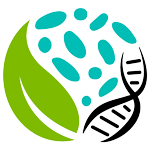Mycorrhiza helper bacteria
Aurélie Deveau, and Jessy Labbé
28 October 2016, Molecular Mycorrhizal Symbiosis (Ed. Francis Martin) pages 437 – 450; doi: 10.1002/9781118951446
Abstract
This chapter focuses on the Mycorrhiza Helper Bacteria (MHB), a generic name given to bacteria which stimulate the formation of mycorrhizal symbiosis. By extension, some bacterial strains that positively impact the functioning of mycorrhizal symbiosis are also called MHB. These bacteria have applicative interests, as they indirectly improve the health and growth of tree seedlings. MHB are not restricted to a specific type of ecosystem, but are rather generalist in the way that they associate with both herbaceous and woody mycorrhizal plants from boreal, temperate, arid and tropical ecosystems. However, understanding the molecular mechanisms and their specificities will help us to know more about the ecology of the MHB. The process of acquisition varies between fungal species; while ectomycorrhizal fungi most probably recurrently acquire them from the environment, the association between bacterial endosymbionts and Glomeromycota probably dates back to very ancient times, and has since been vertically transmitted.
Citation
Deveau, A. and Labbé, J. (2016) Mycorrhiza helper bacteria, in Molecular Mycorrhizal Symbiosis (ed F. Martin), John Wiley & Sons, Inc., Hoboken, NJ, USA. doi: 10.1002/9781118951446.ch24

